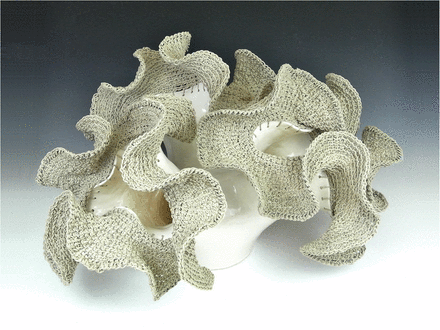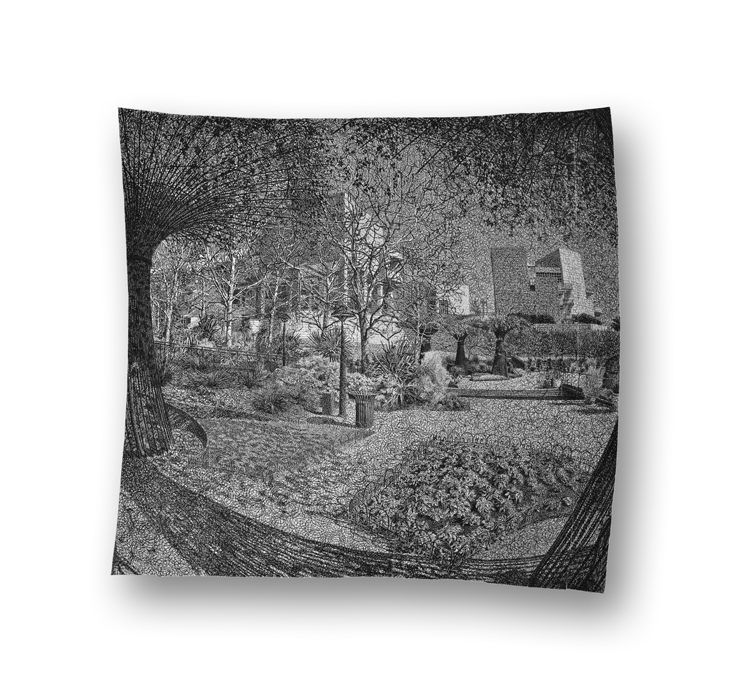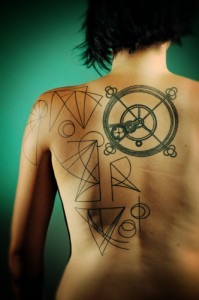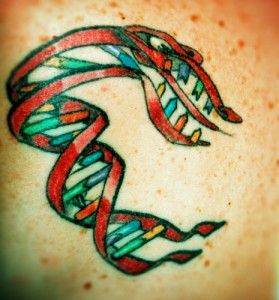I stumbled across this June 8, 2022 AMC Networks news release in the last place I was expecting (i.e., a self-described global entertainment company’s website) to see a STEM (science, technology, engineering, and mathematics) announcement,
AMC NETWORKS CONTENT ROOM TEAMS WITH THE AD COUNCIL TO EMPOWER GIRLS IN STEM, FEATURING “THE WALKING DEAD”
AMC Networks Content Room and the Ad Council, a non-profit and leading producer of social impact campaigns for 80 years, announced today a series of new public service advertisements (PSAs) that will highlight the power of girls in STEM (science, technology, engineering and math) against the backdrop of the global hit series “The Walking Dead.” In the spots, behind-the-scenes talent of the popular franchise, including Director Aisha Tyler, Costume Designer Vera Chow and Art Director Jasmine Garnet, showcase how STEM is used to bring the post-apocalyptic world of “The Walking Dead” to life on screen. Created by AMC Networks Content Room, the PSAs are part of the Ad Council’s national She Can STEM campaign, which encourages girls, trans youth and non-binary youth around the country to get excited about and interested in STEM.
The new creative consists of TV spots and custom videos created specifically for TikTok and Instagram. The spots also feature Gitanjali Rao, a 16-year-old scientist, inventor and activist, interviewing Tyler, Chow and Garnet discussing how they and their teams use STEM in the production of “The Walking Dead.” Using before and after visuals, each piece highlights the unique and unexpected uses of STEM in the making of the series. In addition to being part of the larger Ad Council campaign, the spots will be available on “The Walking Dead’s” social media platforms, including Facebook, Instagram, Twitter and YouTube pages, and across AMC Networks linear channels and digital platforms.
PSA: https://youtu.be/V20HO-tUO18
Social: https://youtu.be/LnDwmZrx6lI
Said Kim Granito, EVP of AMC Networks Content Room: “We are thrilled to partner with the Ad Council to inspire young girls in STEM through the unexpected backdrop of ‘The Walking Dead.’ Over the last 11 years, this universe has been created by an array of insanely talented women that utilize STEM every day in their roles. This campaign will broaden perceptions of STEM beyond the stereotypes of lab coats and beakers, and hopefully inspire the next generation of talented women in STEM. Aisha Tyler, Vera Chow and Jasmine Garnet were a dream to work with and their shared enthusiasm for this mission is inspiring.”
“Careers in STEM are varied and can touch all aspects of our lives. We are proud to partner with AMC Networks Content Room on this latest work for the She Can STEM campaign. With it, we hope to inspire young girls, non-binary youth, and trans youth to recognize that their passion for STEM can impact countless industries – including the entertainment industry,” said Michelle Hillman, Chief Campaign Development Officer, Ad Council.
Women make up nearly half of the total college-educated workforce in the U.S., but they only constitute 27% of the STEM workforce, according to the U.S. Census Bureau. Research shows that many girls lose interest in STEM as early as middle school, and this path continues through high school and college, ultimately leading to an underrepresentation of women in STEM careers. She Can STEM aims to dismantle the intimidating perceived barrier of STEM fields by showing girls, non-binary youth, and trans youth how fun, messy, diverse and accessible STEM can be, encouraging them to dive in, no matter where they are in their STEM journey.
Since the launch of She Can STEM in September 2018, the campaign has been supported by a variety of corporate, non-profit and media partners. The current funder of the campaign is IF/THEN, an initiative of Lyda Hill Philanthropies. Non-profit partners include Black Girls Code, ChickTech, Girl Scouts of the USA, Girls Inc., Girls Who Code, National Center for Women & Information Technology, The New York Academy of Sciences and Society of Women Engineers.
About AMC Networks Inc.
AMC Networks (Nasdaq: AMCX) is a global entertainment company known for its popular and critically-acclaimed content. Its brands include targeted streaming services AMC+, Acorn TV, Shudder, Sundance Now, ALLBLK, and the newest addition to its targeted streaming portfolio, the anime-focused HIDIVE streaming service, in addition to AMC, BBC AMERICA (operated through a joint venture with BBC Studios), IFC, SundanceTV, WE tv and IFC Films. AMC Studios, the Company’s in-house studio, production and distribution operation, is behind some of the biggest titles and brands known to a global audience, including The Walking Dead, the Anne Rice catalog and the Agatha Christie library. The Company also operates AMC Networks International, its international programming business, and 25/7 Media, its production services business.
About Content Room
Content Room is AMC Networks’ award-winning branded entertainment studio that collaborates with advertising partners to build brand stories and create bespoke experiences across an expanding range of digital, social, and linear platforms. Content Room enables brands to fully tap into the company’s premium programming, distinct IP, deep talent roster and filmmaking roots through an array of creative partnership opportunities— from premium branded content and integrations— to franchise and gaming extensions.
Content Room is also home to the award-winning digital content studio which produces dozens of original series annually, which expands popular AMC Networks scripted programming for both fans and advertising partners by leveraging the built-in massive series and talent fandoms.
The Ad Council
The Ad Council is where creativity and causes converge. The non-profit organization brings together the most creative minds in advertising, media, technology and marketing to address many of the nation’s most important causes. The Ad Council has created many of the most iconic campaigns in advertising history. Friends Don’t Let Friends Drive Drunk. Smokey Bear. Love Has No Labels.The Ad Council’s innovative social good campaigns raise awareness, inspire action and save lives. To learn more, visit AdCouncil.org, follow the Ad Council’s communities on Facebook and Twitter, and view the creative on YouTube.
You can find the ‘She Can Stem’ Ad Council initiative here.
Canadian women and the AI4Good Lab
A June 9, 2022 posting on the Borealis AI website describes an artificial intelligence (AI) initiative designed to encourage women to enter the field,
The AI4Good Lab is one of those programs that creates exponential opportunities. As the leading Canadian AI-training initiative for women-identified STEM students, the lab helps encourage diversity in the field of AI. Participants work together to use AI to solve a social problem, delivering untold benefits to their local communities. And they work shoulder-to-shoulder with other leaders in the field of AI, building their networks and expanding the ecosystem.
At this year’s [2022] AI4Good Lab Industry Night, program partners – like Borealis AI, RBC [Royal Bank of Canada], DeepMind, Ivado and Google – had an opportunity to (virtually) meet the nearly 90 participants of this year’s program. Many of the program’s alumni were also in attendance. So, too, were representatives from CIFAR [Canadian Institute for Advanced Research], one of Canada’s leading global research organizations.
Industry participants – including Dr. Eirene Seiradaki, Director of Research Partnerships at Borealis AI, Carey Mende-Gibson, RBC’s Location Intelligence ambassador, and Lucy Liu, Director of Data Science at RBC – talked with attendees about their experiences in the AI industry, discussed career opportunities and explored various career paths that the participants could take in the industry. For the entire two hours, our three tables and our virtually cozy couches were filled to capacity. It was only after the end of the event that we had the chance to exchange visits to the tables of our partners from CIFAR and AMII [Alberta Machine Intelligence Institute]. Eirene did not miss the opportunity to catch up with our good friend, Warren Johnston, and hear first-hand the news from AMII’s recent AI Week 2022.
…
Borealis AI is funded by the Royal Bank of Canada. Somebody wrote this for the homepage (presumably tongue in cheek),
All you can bank on.
…
The AI4Good Lab can be found here,
The AI4Good Lab is a 7-week program that equips women and people of marginalized genders with the skills to build their own machine learning projects. We emphasize mentorship and curiosity-driven learning to prepare our participants for a career in AI.
The program is designed to open doors for those who have historically been underrepresented in the AI industry. Together, we are building a more inclusive and diverse tech culture in Canada while inspiring the next generation of leaders to use AI as a tool for social good.
…
A most recent programme ran (May 3 – June 21, 2022) in Montréal, Toronto, and Edmonton.
There are a number of AI for Good initiatives including this one from the International Telecommunications Union (a United Nations Agency).
For the curious, I have a May 10, 2018 post “The Royal Bank of Canada reports ‘Humans wanted’ and some thoughts on the future of work, robots, and artificial intelligence” where I ‘examine’ RBC and its AI initiatives.



